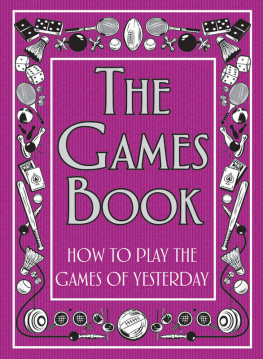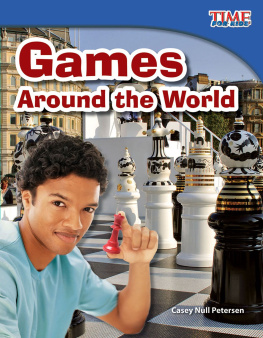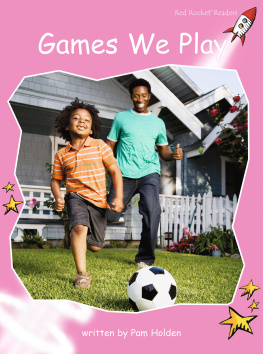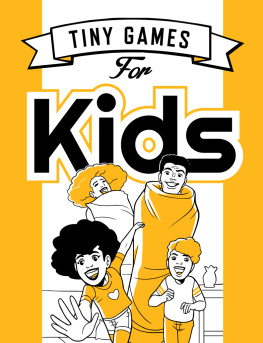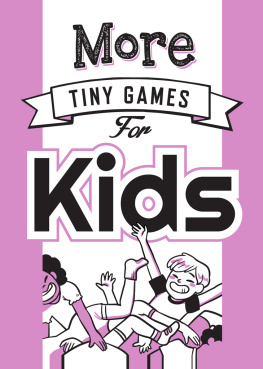A Rockpool book
Published by Rockpool Publishing
24 Constitution Road, Dulwich Hill, NSW 2203, Australia
www.rockpoolpublishing.com.au
First published in 2010
Copyright Shelalagh McGovern, 2010
All rights reserved. No part of this publication may be reproduced, stored in a retrieval system, or transmitted in any form or by any means, electronic, mechanical, photocopying, recording or otherwise, without the prior written permission of the publisher.
National Library of Australia Cataloguing-in-Publication entry
Lets play : 100 popular games for kids / Shelalagh McGovern ; photographs by Stephen Reinhardt.
1st ed.
9781921295348 (pbk.)
Games.
Reinhardt, Stephen.
790.1922
Cover and internal design by Ellie Exarchos
Typeset by Ice Cold Publishing
Printed and bound by Everbest Printing Co Ltd
10 9 8 7 6 5 4 3 2 1
`Some of the games described in this book are Theatre sports games. These games are copyright Lyn Pearce and appear in more detail in Improvisation; The Guide. They are used with permission of the publishers. The games are: 75. Knife and fork, 76. Postcards, 78. Expert double figures.
We are in our truest form when playing a game and it is such a joy to live in the moment and to play.
About the author

Shelalagh McGovern is passionate about aerial and circus arts. She co-founded Aerialize-Sydney Aerial Theatre in 1998 and was the Director until 2008. She is an aerial instructor and performer with over 12 years experience and a background in gymnastics. She trained in aerial skills with trainers from Circus Oz, Flying Fruit Fly Circus, Legs on the Wall and Circus Space, London. Some of her aerial highlights include performing with Les Comediens, the Flying Lotahs in Singapore and in the Sydney Olympic Games Opening Ceremony.
Shelalagh has directed aerial segments for the Schools Spectacular and Sydney Youth Olympics opening Ceremony as well as many Aerialize productions. She produced and co-directed Walking on Air, an aerial-rock performance for the Studio, Sydney Opera House.
She has a Bachelor of Arts from the University of NSW, a graduate certificate in Arts Administration from UTS and is a qualified rigger. She lives in Sydney with her husband and son.
Acknowledgements
Id like to thank the people who I have played games with over the years, including the performers, instructors and directors for their generosity and creativity as well as the students who I have taught, for their enthusiasm, and shared enjoyment of the games we have played.
Thanks to the playful children (and their parents) who appear in this book; Stella, Sarah, Jordan, India, Ella, Alison, Victoria, Sanne, Tom, Luuk, Saffron, Ruby, Nicholas, Chealsea, Lincoln, Isabella, Rhiana, Kane and Angus. Many thanks also to Jess Paraha, and to my nieces and nephews (and especially their parents) who also appear in this book. Thanks to Lyn Pierce for her permission to use Theatre sport games in this book and to Stephen for the photography.
Finally, thanks to my publisher Lisa, for asking me to write this book.
Introduction
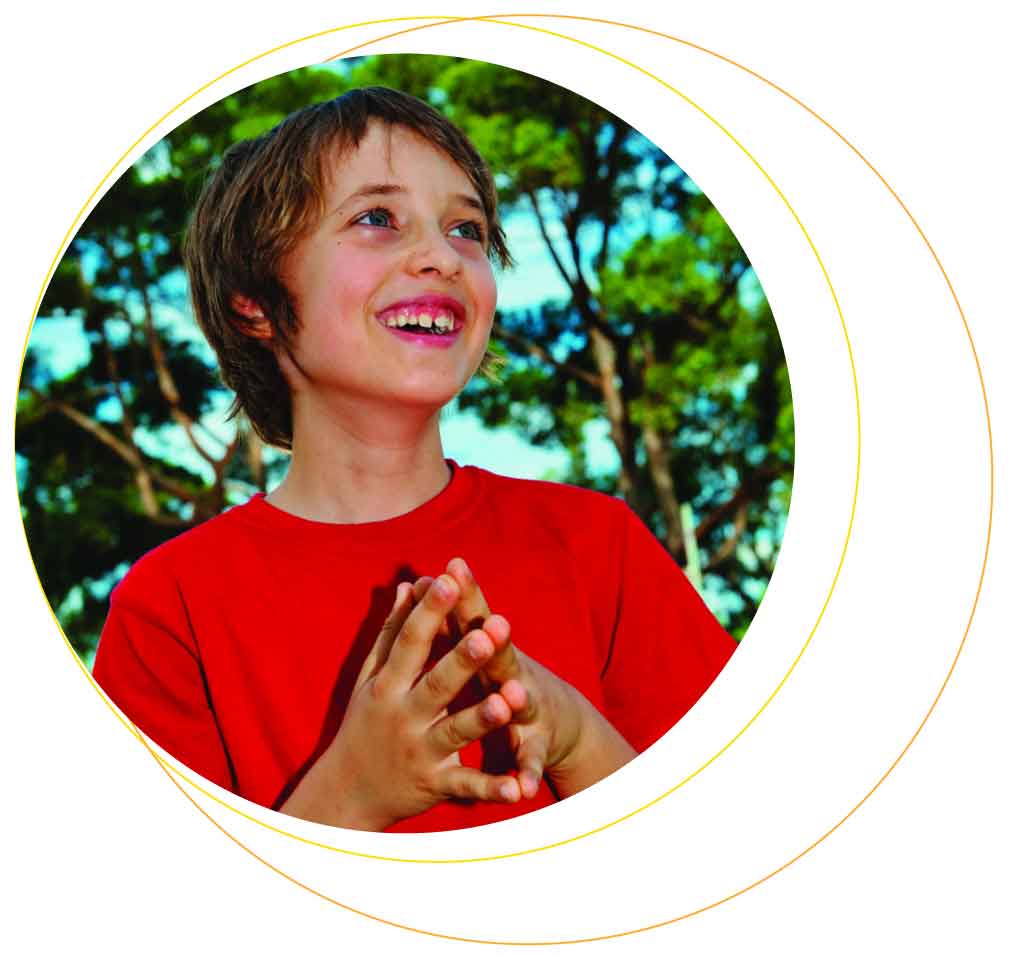
Kids love to play! Theres nothing quite like playing a game. When you play a game well, it becomes your whole world and nothing else exists. You interact, communicate and laugh with others. Children are particularly good at playing games because they live in the moment. We learn best when we enjoy what we are doing and in an environment where we can express ourselves, make mistakes and be creative.
As an adult I still love to play games. For over 10 years, I have taught circus, aerial and drama skills to children and adults from 5 to 70 years old from complete beginners to professional performers. I have used games to begin a class, help students work together and to develop performances.
One of the best things about playing games is having fun. Games can cross cultural, social, language and age barriers. Playing games at parties and events creates an opportunity for people to enjoy themselves while getting to know one another.
These days, childrens parties can be a real production so including a number of simple games is a good way to entertain a group of children. You may also like to include the adults in the games as well. If you are organising your childs birthday, or a family get-together, if you work with young children or you need some ice-breakers for a work function or a group of adults this book is for you.
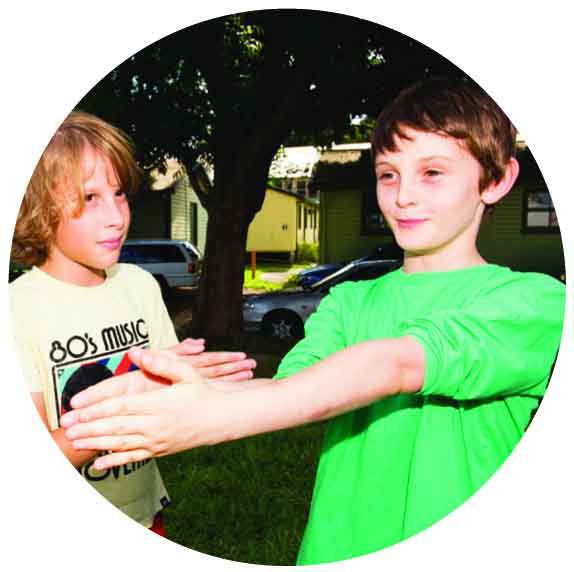
I have compiled a collection of tried and tested games that I have enjoyed with many people. Although they are set out in age categories, this is only a guide as most of these games can be played by anyone, no matter what their age. The main objective is to have fun.
Ready, set, go getting started
Leading the games
If you are leading the games be a confident and fair leader. Make sure you understand the rules of the games. Ask a family member or friend to assist you with running the games. Always take time to explain the game and make sure the players understand how to play. You will need to physically demonstrate actions when explaining some of the games listed.
Kids love to ask why or offer suggestions. Be ready to explain why and allow for variations to evolve. A child might suggest playing the game a new way. Try the childs suggestion if it is appropriate, and embrace their ideas if they are practical for the whole group.
Listen to the group and watch them play. Always finish a game while everyone is having fun. That way you can go back to it again with ease. Most of the games in this book are crowd-pleasers, but each group is different and group dynamics can change quickly so be ready to let something go if its not working.
Give your players responsibilities and decision-making opportunities. Empowering your players will bring out the best in them, so try to choose a range of games that cater for the different strengths of the players in the group. Some will be good at physical games while others may excel at memory games. You may like to show the book to the players and encourage them to choose and lead the games they like.
Safety first
Do your utmost to create a safe and fun environment so the players feel comfortable with the games. At the beginning of a session go through key safety rules together. Encourage the players to be responsible for their actions, respect their fellow players and the environment they are in.
As the leader, remember that some of the players may be confused or overwhelmed with too much information or high expectations. Others may just be really excited and ready to play. Start with fun and easy games to build confidence, trust and teamwork, and then proceed to more complicated games. Generally all players want to fit in and belong to the group so they may be distressed if they cant for some reason. Players who are bored thrive when given decision-making opportunities. For example Rock, paper, scissors is a good game to allow natural leaders to shine.


